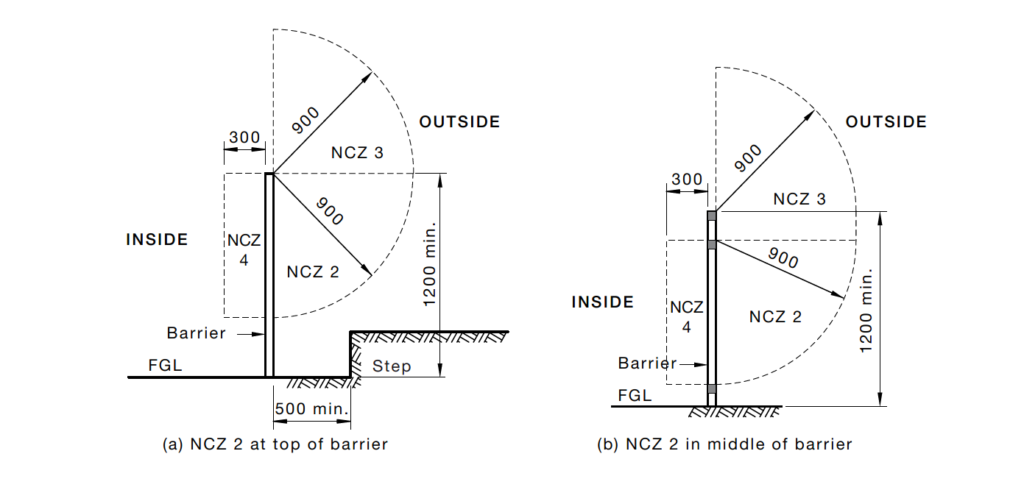The requirements for child-resistant barriers vary depending on when the pool was built and where the pool is located. Some older swimming pools in NSW might include doors or windows as part of the pool fence or barrier. This is no longer allowed in for any new pools being built.
Regulations for NSW pools built before 1 August 1990
Access to the pool from the house must be restricted at all times. Windows and doors may form part of the barrier, but they must be compliant.
Regulations for NSW pools built after 1 August 1990
The pool must be surrounded by a fence that separates the pool from the house. For pools built before 1 July 2010, some exemptions apply when the pool is part of:
- a very small property (less than 230 square metres)
- a large property (2 hectares or over)
- a waterfront property
Non-climbable zone regulations
To prevent children climbing over fencing into the pool area, NSW laws require pool owners to make sure they maintain a `non-climbable zone´ around the pool.
Any trees, shrubs or any other objects such as a barbeque, pot plants, toys, ladders and chairs must not be within the 90cm non climbable zone. This zone is measured in an arc shape from the top of the pool fence arching towards the ground on the outside. It also includes the space extending 30cm inside the pool area – this space should also be cleared of any potential footholds or handholds. Any horizontal climbable bars on the pool fence must also be spaced AT LEAST 90cm apart.
Book a pool compliance inspection
Please fill out the form below and we will contact you as soon as we can to arrange an inspection.
Doors in pool barriers
If you have a door that forms part of a pool barrier you must make sure that:
- It self closes.
- It self latches.
- The latching device is at least 150cm off the ground.
- It has a non-climbable zone of 90cm that is at least 120cm above the floor.
- It opens outwards from the pool enclosure.
- It does not have any pet doors.
If all of the above criteria are not satisfied, you will need to take the necessary action to ensure that any door that is part of a pool barrier complies with these requirements or upgrade to the new standard – meaning 4 sided pool fence.

Windows in pool barriers
If you have windows that form part of a pool barrier, they must have a locking device or a security screen that prevents them from opening more than 10cm. If it does not satisfy this requirement, you will need to install a locking device or security screen that reduces the gap to 10cm or less. Locking devices and security screens can be purchased from your local hardware store. Make sure you also seek advice from your local council, accredited private certifier or licensed builder.
Gate closing and latching devices
Check to ensure that your pool gate:
- Is never propped open and is always kept shut.
- Swings outwards (away from the pool area). If it does not swing outwards, the gate must be re-hung so that it does.
- Shuts automatically from any open position, without having to forcibly close it.
- Automatically locks (self-latches) when it closes.
If the gate does not shut and lock automatically, the pool gate should be permanently fastened until a new lock and closing device can be installed. Self-closing and self-latching devices can be purchased from most pool and hardware shops and can be easily installed.
Note: Hinges must be no more than 1cm wide or they are required to be 90cm between the hinges.
Pool fence and gate maintenance regulations
All fence bolts, screws and fasteners must be tight and in good order. Any loose bolts, screws and fasteners should be tightened or replaced.
Self-closing gate hinges, locks and latches should be sprayed with lubricating oil or silicone.
Manufacturers of the pool fence and gate should provide written instructions on how to maintain your pool fence and gate. This may include the regular replacement of springs and regular spraying of self-closing gate hinges, locks and latches with lubricating oil or silicone.
Proper maintenance can help to prevent many of the faults relating to self-closing and self-latching gates.
Note: If purchasing new gates they should be stamped in accordance with Australian Standards.
